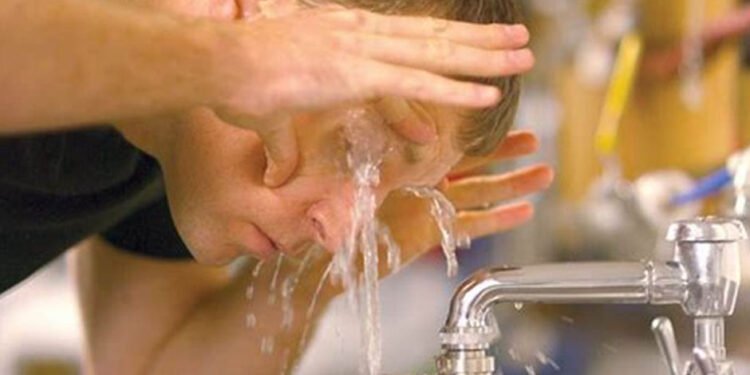An eyewash station is a critical component of safety compliance in any workplace where employees handle chemicals, debris, or potentially hazardous substances. These stations provide immediate relief in the event of an eye exposure incident, helping to reduce the risk of permanent damage or injury. Selecting the right model for your workplace depends on factors such as industry standards, space availability, and the specific hazards present in your environment. This guide will help you navigate the process of choosing the best eyewash station for your needs.
Understanding OSHA and ANSI Compliance
Before selecting an eyewash station, it’s important to ensure compliance with workplace safety regulations. In the United States, the Occupational Safety and Health Administration (OSHA) requires eyewash stations in workplaces where employees may be exposed to hazardous materials. The American National Standards Institute (ANSI) sets specific standards for emergency eyewash equipment, detailed in ANSI Z358.1.
OSHA Requirements
- Eyewash stations must be available wherever hazardous chemicals are present.
- Employees must be able to reach an eyewash station within 10 seconds of exposure.
- Eyewash stations must provide a continuous flow of water for at least 15 minutes.
ANSI Z358.1 Standards
- Water flow must be at a controlled temperature between 60-100°F.
- The station must deliver a minimum of 0.4 gallons per minute (GPM) for eyewash units and 3 GPM for combination eyewash and drench showers.
- No obstructions should hinder immediate access to the eyewash station.
Types of Eyewash Stations
Several types of eyewash stations are available, each designed to meet different workplace needs. The best model for your facility will depend on your work environment, space limitations, and budget.
1.Plumbed Eyewash Stations
Plumbed eyewash stations are permanently connected to a water supply and provide a continuous flow of water. These models are ideal for facilities with a consistent need for emergency eye irrigation.
Pros:
- Reliable water supply
- Can be combined with safety showers
- Meets ANSI and OSHA regulations
Cons:
- Requires professional installation
- Limited to fixed locations
2.Portable Eyewash Stations
Portable eyewash stations are self-contained units filled with a saline solution or water. These stations are useful for temporary worksites, areas without plumbing access, or mobile work environments.
Pros:
- No plumbing required
- Can be moved as needed
- Simple maintenance
Cons:
- Limited water capacity
- Requires frequent refilling and maintenance
3.Combination Eyewash and Drench Showers
For workplaces handling highly hazardous materials, combination eyewash and drench showers provide both eye irrigation and full-body decontamination. These units are commonly found in laboratories, chemical plants, and manufacturing facilities.
Pros:
- Full-body protection in addition to eye safety
- Meets stringent safety regulations
- Ideal for high-risk environments
Cons:
- Requires significant space and plumbing
- Higher installation costs
4.Personal Eyewash Bottles
Personal eyewash bottles contain saline solution and are designed for immediate emergency response before reaching a full eyewash station.
Pros:
- Convenient for remote locations
- Easy to store and transport
- Provides immediate relief
Cons:
- Not a substitute for a full eyewash station
- Limited liquid volume
Factors to Consider When Choosing an Eyewash Station
When selecting an eyewash station, consider the following factors to ensure maximum effectiveness and compliance:
1.Hazard Type and Workplace Environment
- Assess the types of chemicals, debris, or contaminants present in your workplace.
- Identify areas with the highest risk of eye exposure.
- Determine whether a plumbed or portable system would be most effective.
2.Accessibility and Location
- Position the eyewash station within a 10-second reach from hazardous work areas.
- Ensure that pathways to the station are unobstructed.
- Select a station that is easily visible and well-marked with signage.
3.Water Temperature and Flow Rate
- Choose a unit that meets ANSI requirements for flow rate and temperature control.
- Consider models with heated water systems for cold environments.
4.Maintenance and Cleaning
- Regular maintenance is required to keep eyewash stations operational.
- Plumbed units should be flushed weekly to prevent stagnant water.
- Portable stations should be checked for expired saline solution and refilled as needed.
5.Budget and Installation Costs
- Compare upfront costs, maintenance requirements, and longevity of different models.
- Plumbed systems may require higher initial investments but offer long-term reliability.
- Portable stations provide flexibility but require frequent replenishment.
Best Practices for Eyewash Station Maintenance
Once you’ve installed an eyewash station, proper maintenance is crucial to ensure it functions correctly in an emergency.
Weekly Maintenance Checklist:
- Flush plumbed eyewash stations for at least 3 minutes to prevent contamination.
- Inspect portable units for adequate water levels and expiration dates.
- Check spray heads and flow regulators for obstructions.
- Ensure easy access and remove any barriers around the station.
Annual Inspection Checklist:
- Conduct a full ANSI compliance check.
- Replace any damaged or expired components.
- Test water temperature and flow rate.
- Train employees on proper usage procedures.
Training Employees on Eyewash Station Use
Even the best eyewash station is ineffective if employees do not know how to use it correctly. Providing regular training ensures that workers can respond quickly and effectively in an emergency.
Key Training Points:
- Recognizing an eye emergency – Know when to use an eyewash station.
- Activating the eyewash unit – Locate and start the flow of water.
- Proper flushing technique – Keep eyes open and rinse for at least 15 minutes.
- Seeking medical attention – Always follow up with a medical professional after exposure.
- Understanding the location of stations – Employees should be aware of station locations in their work area.
Conclusion
Selecting the right eyewash station for your workplace is a crucial decision that directly impacts employee safety. By considering factors such as compliance standards, hazard types, accessibility, and maintenance needs, you can ensure that your facility is well-prepared for emergencies. Regular training and proper maintenance will keep your eyewash station in optimal condition, providing reliable protection when it’s needed most.
For the best results, consult with a safety specialist to evaluate your workplace hazards and choose the appropriate eyewash station model that meets OSHA and ANSI regulations. Investing in high-quality safety equipment today ensures a safer and more compliant workplace for everyone.












